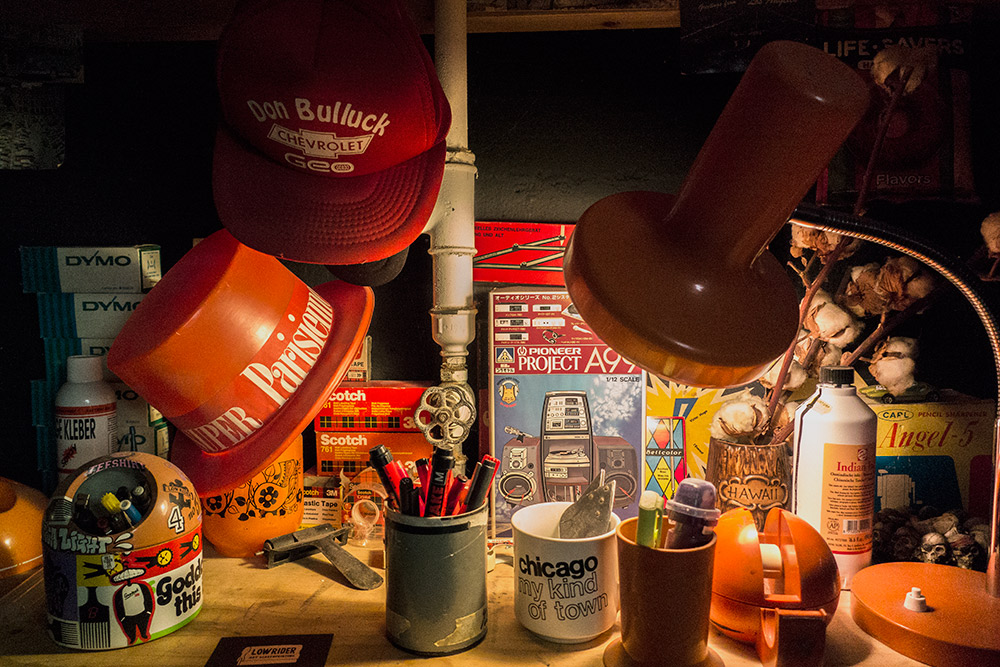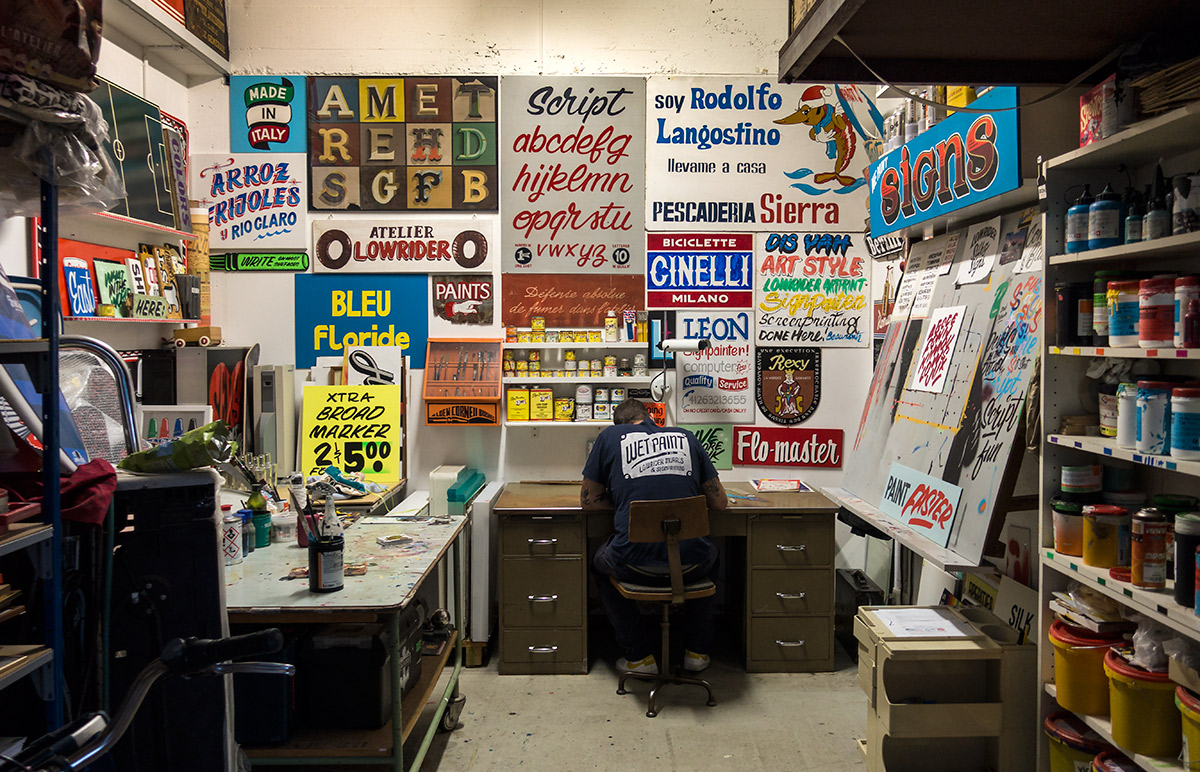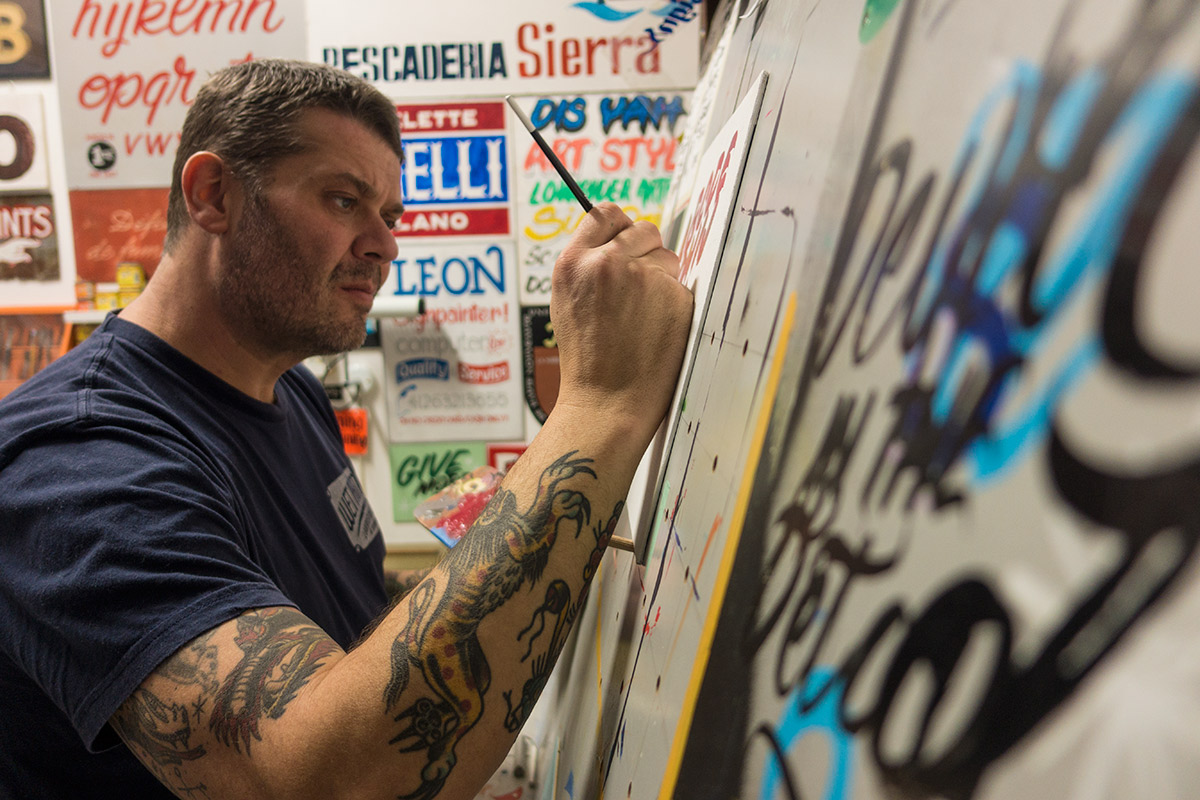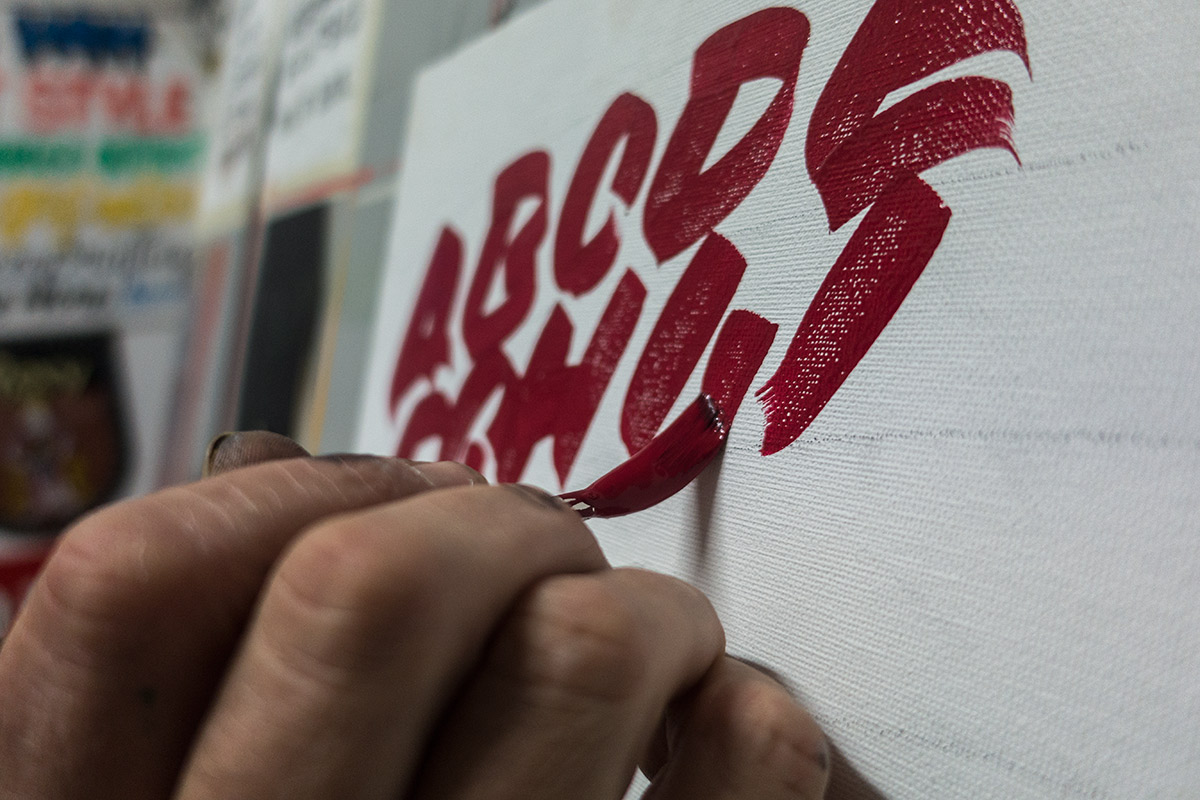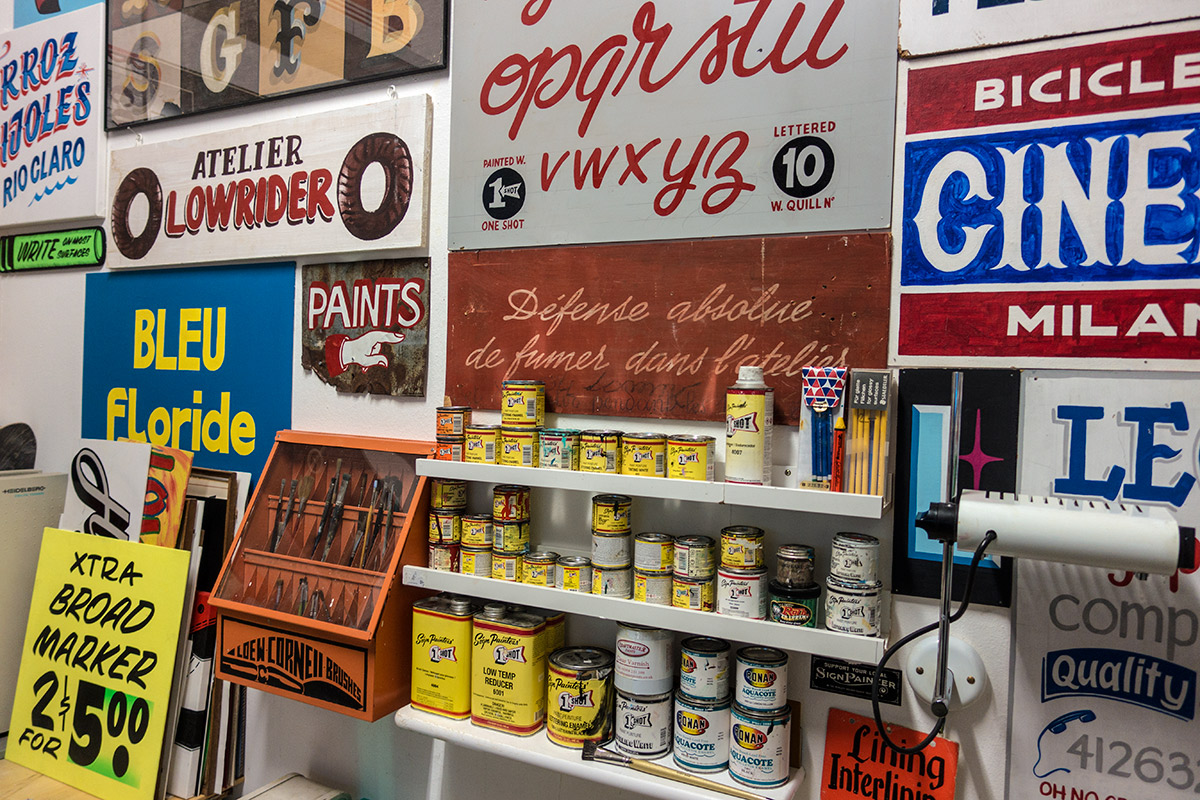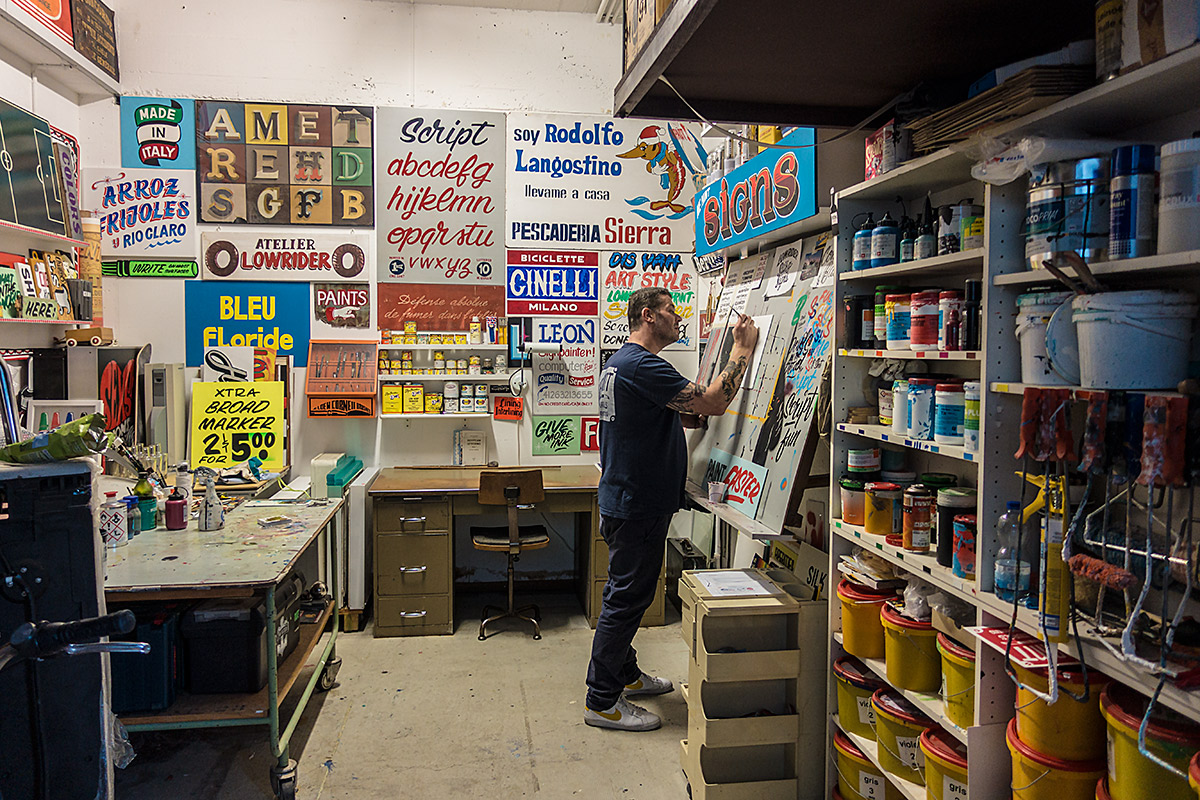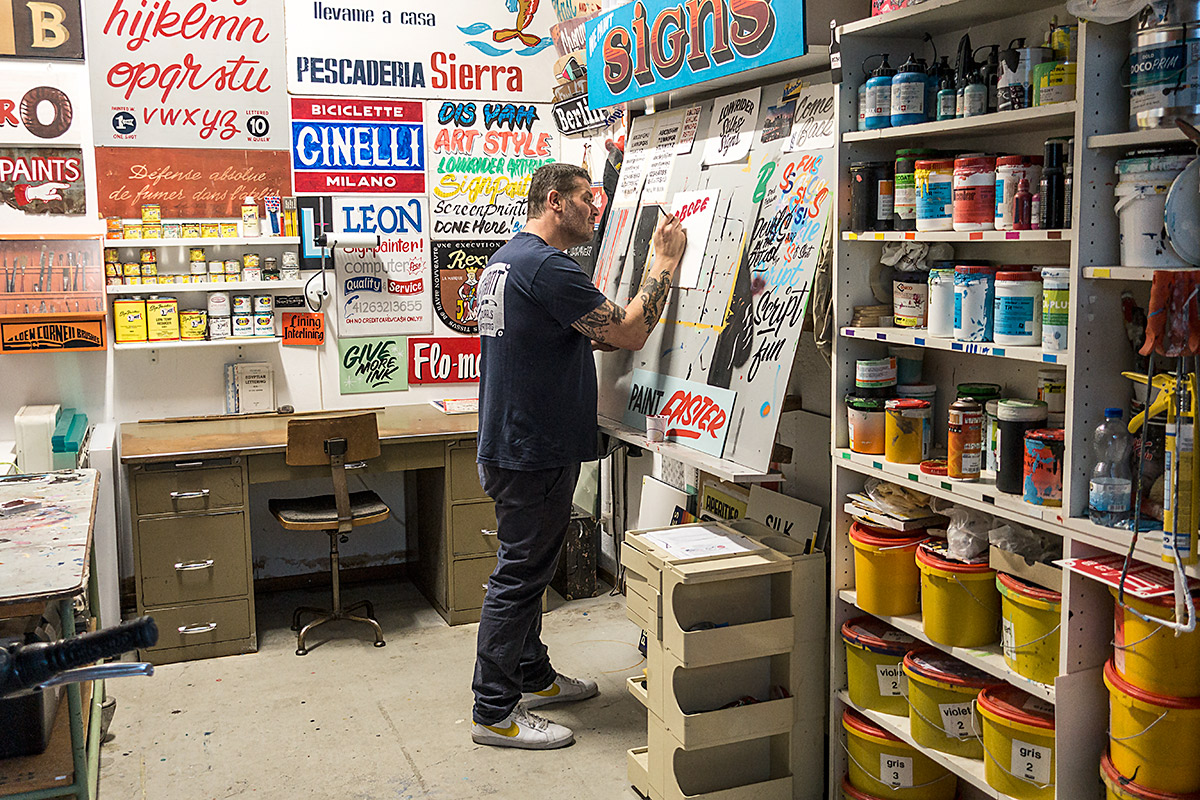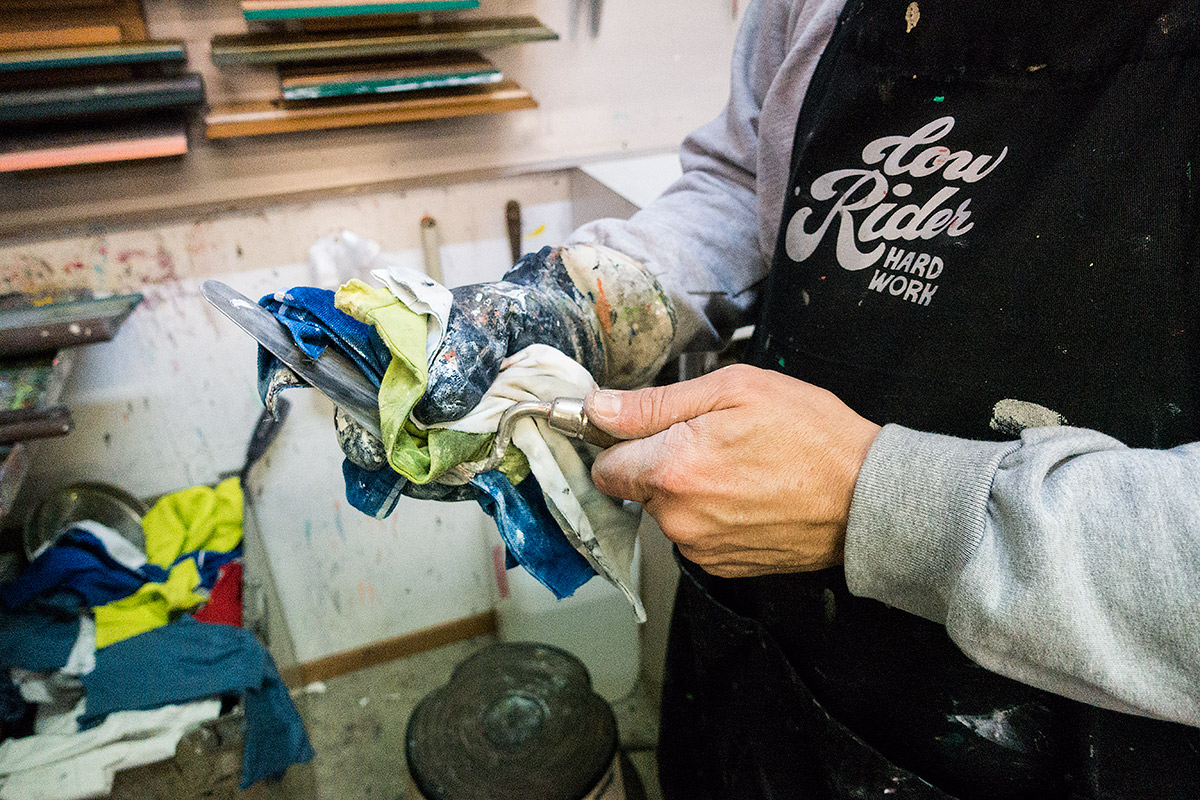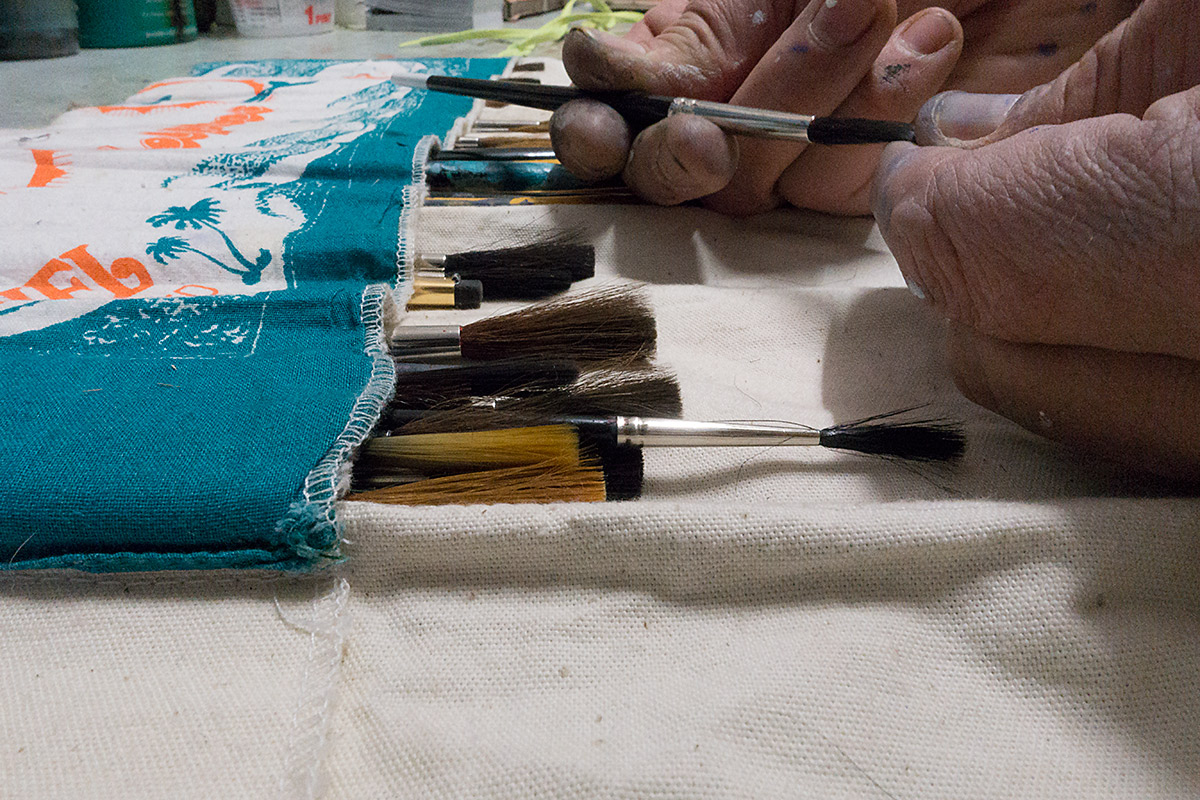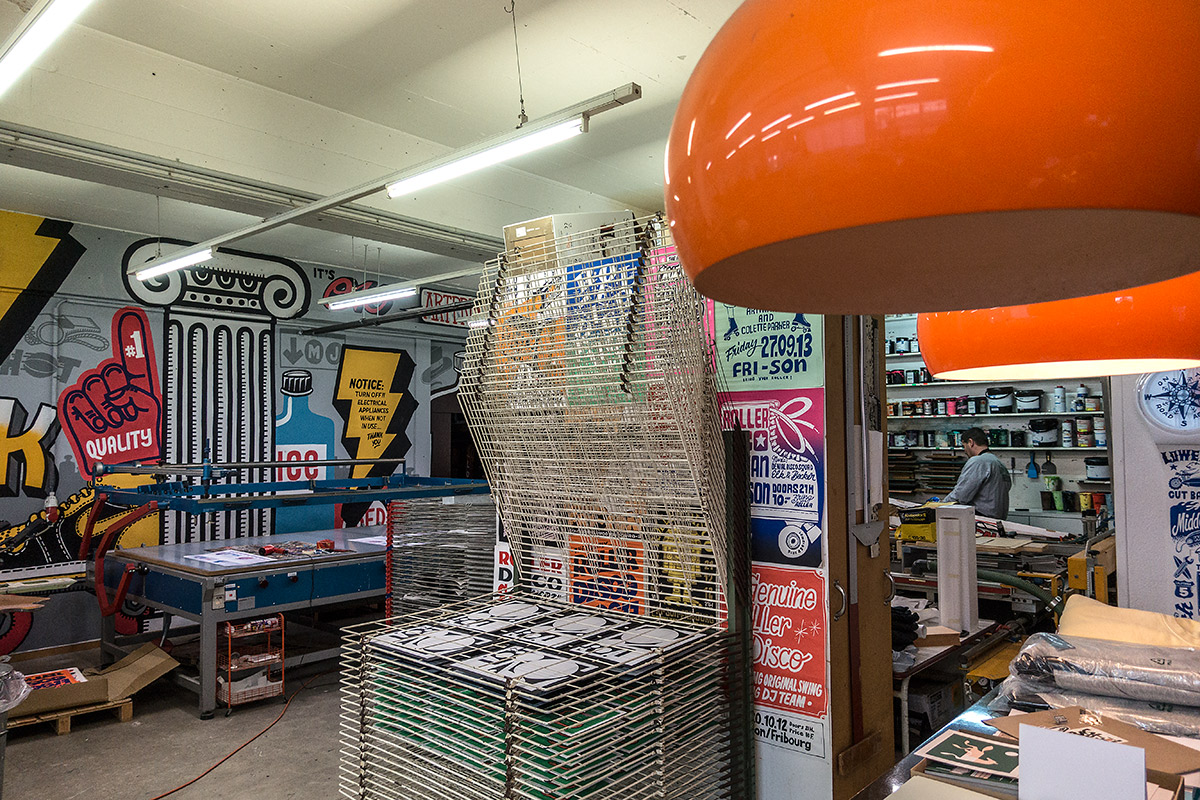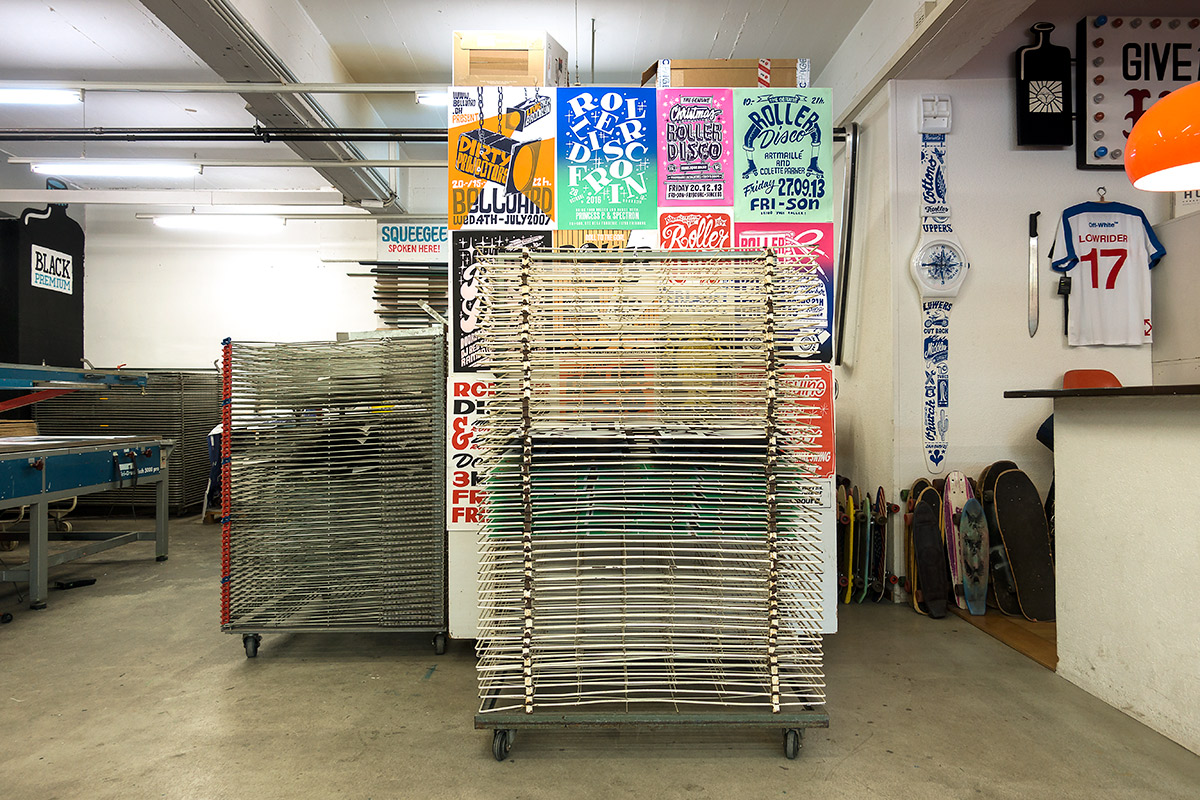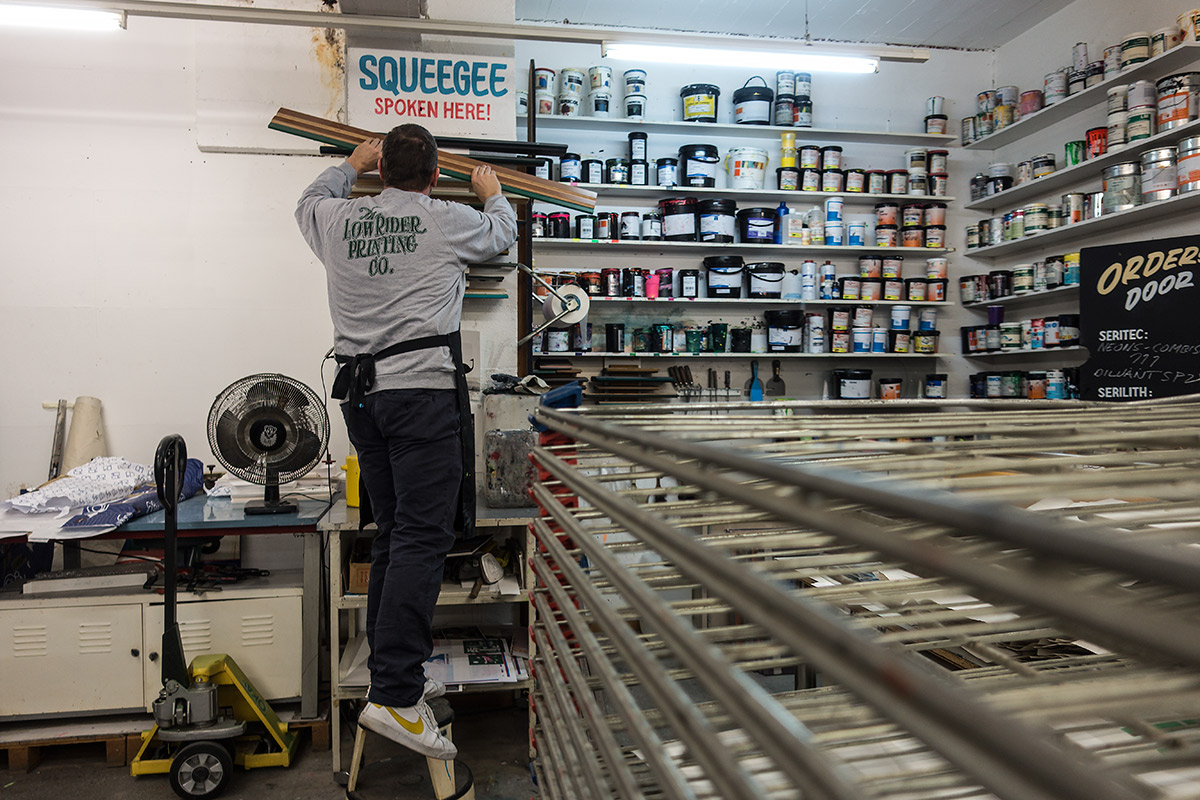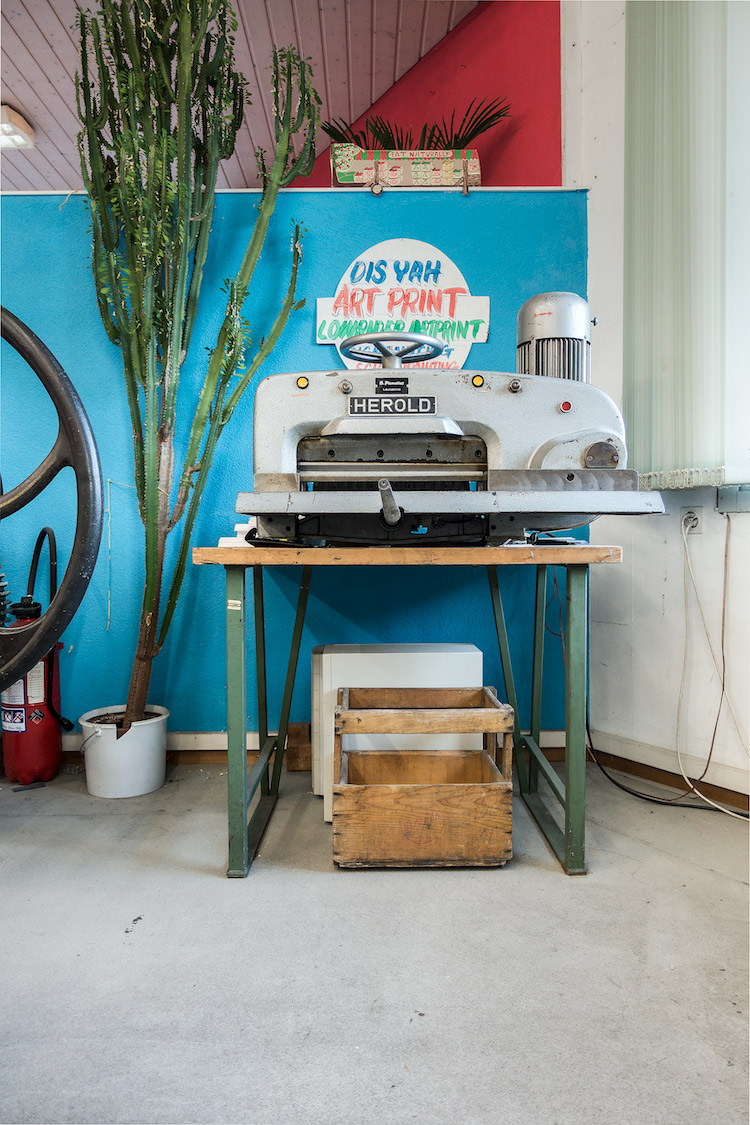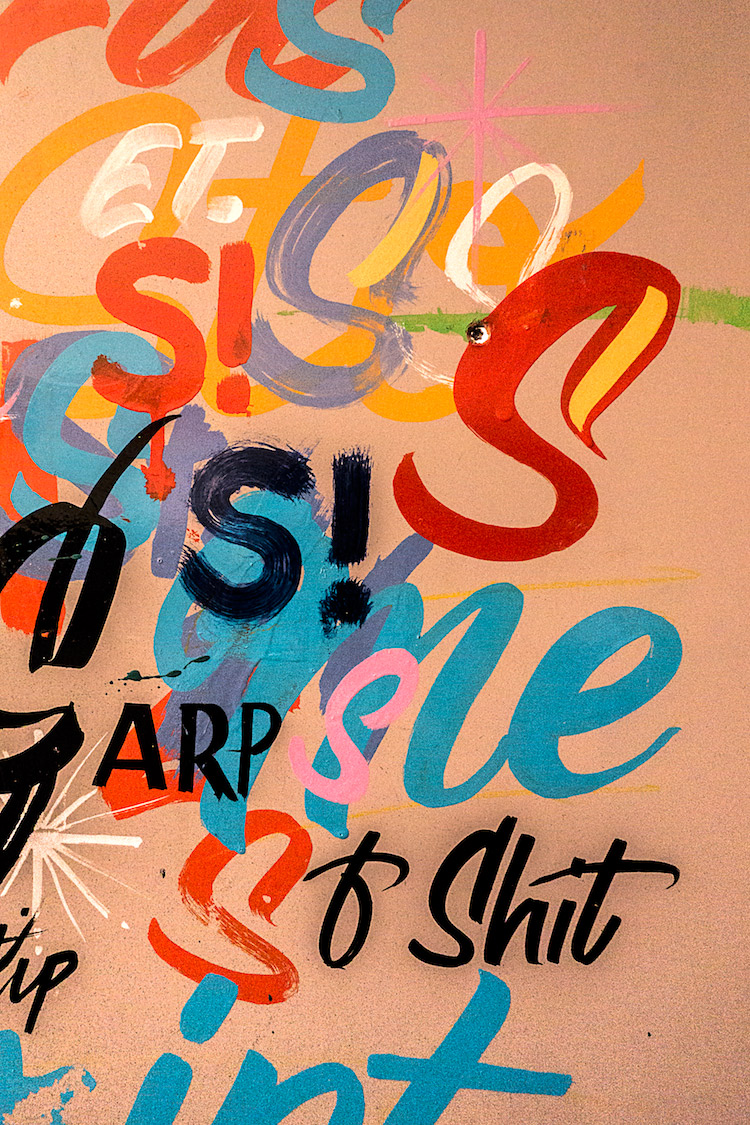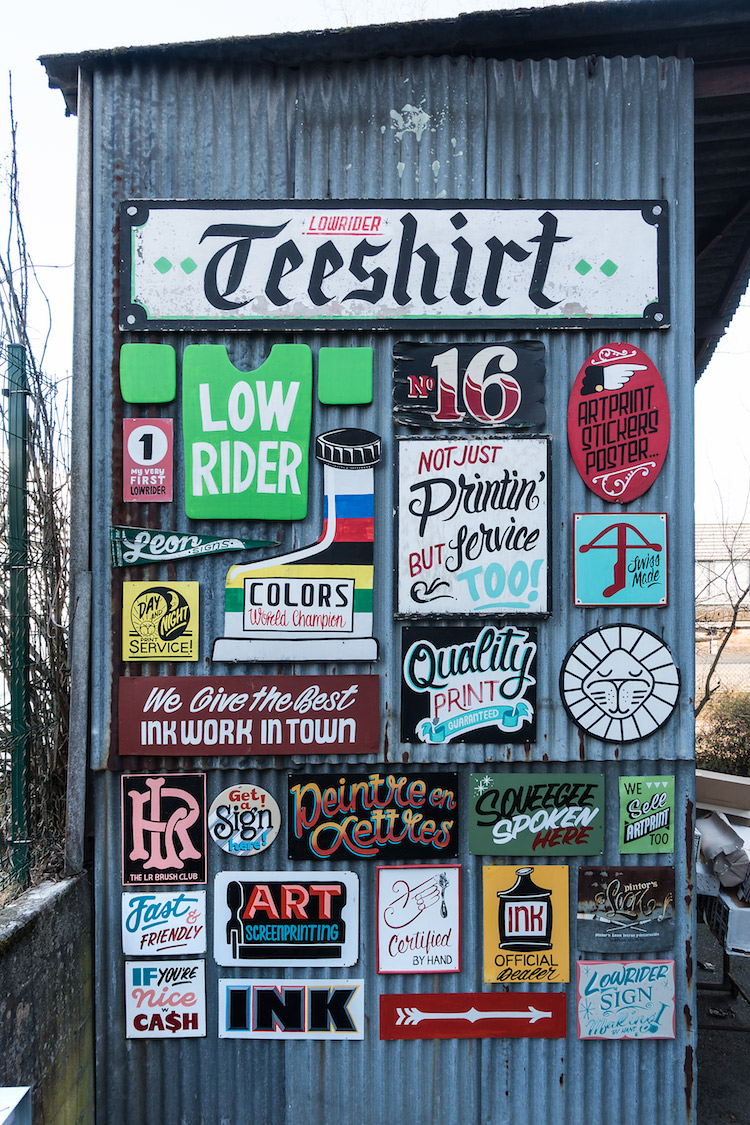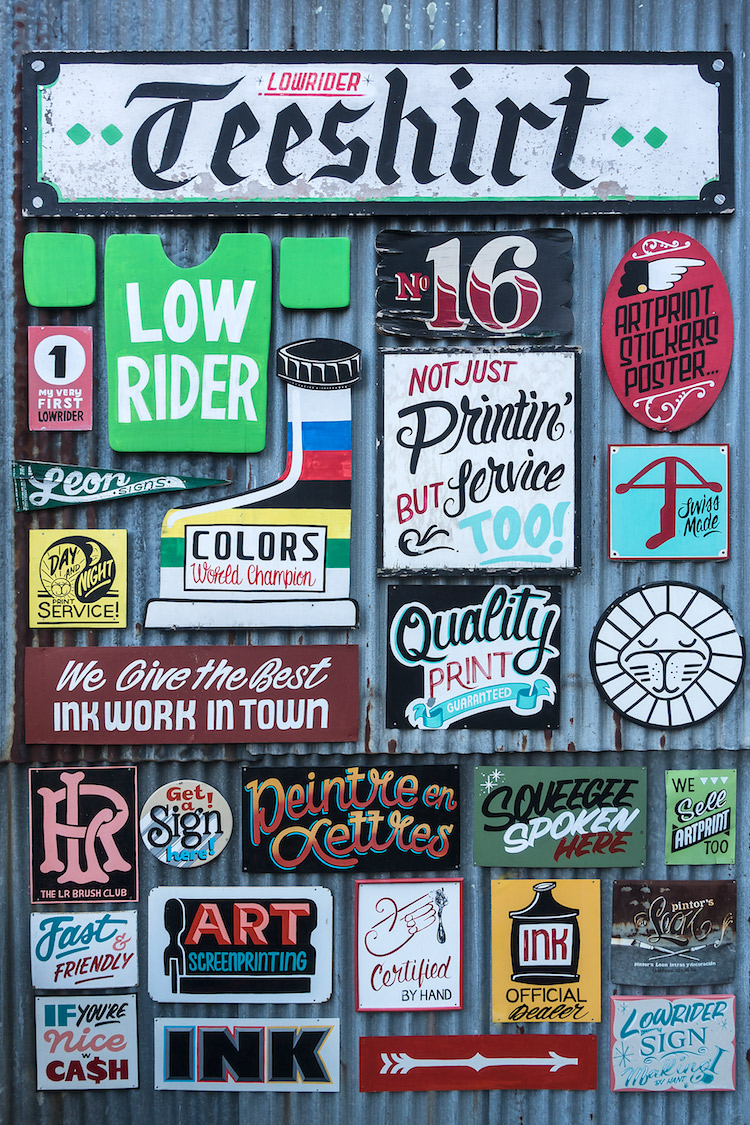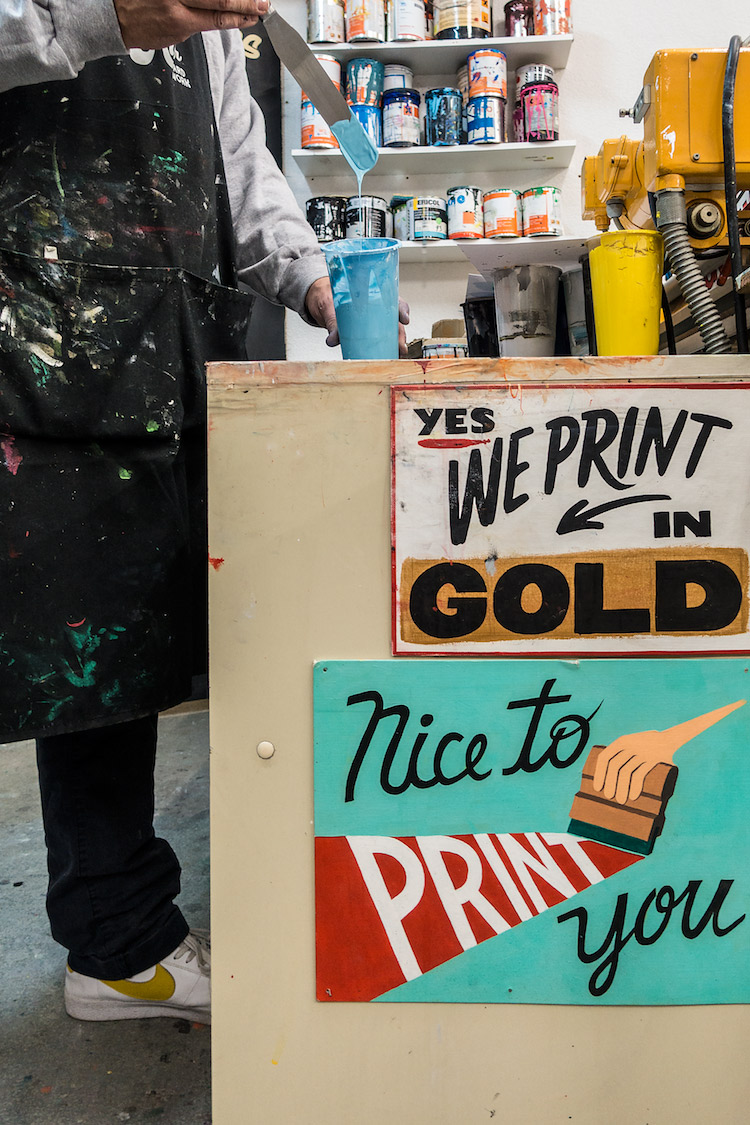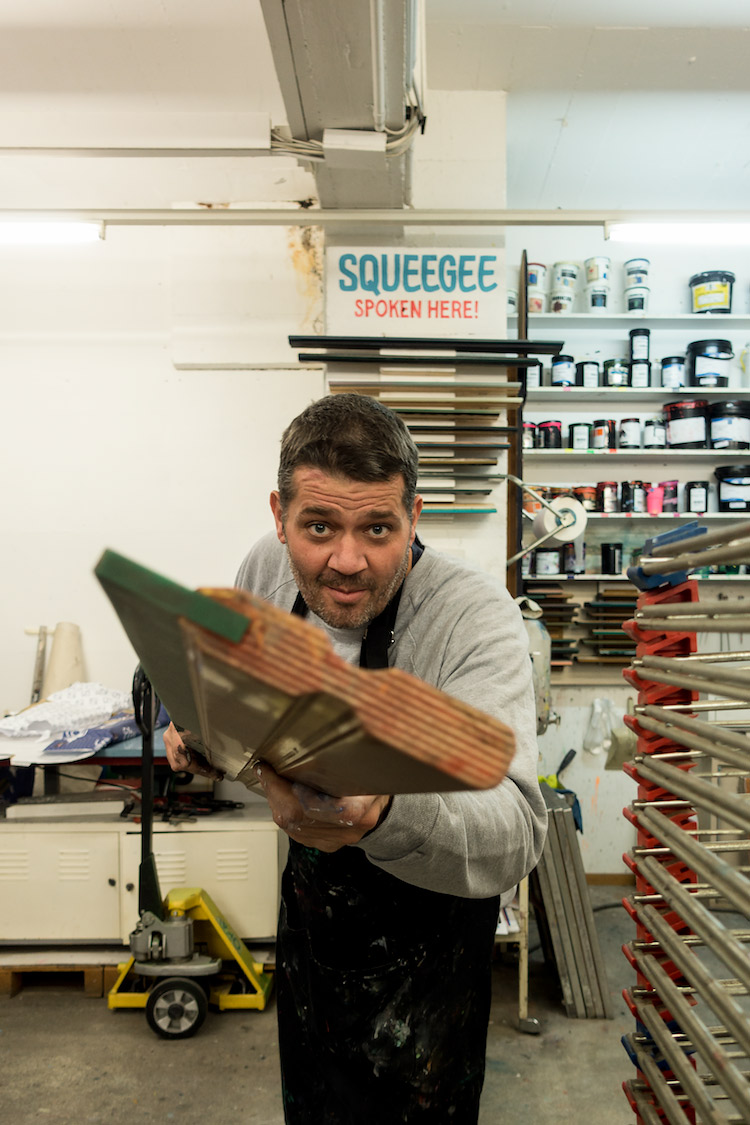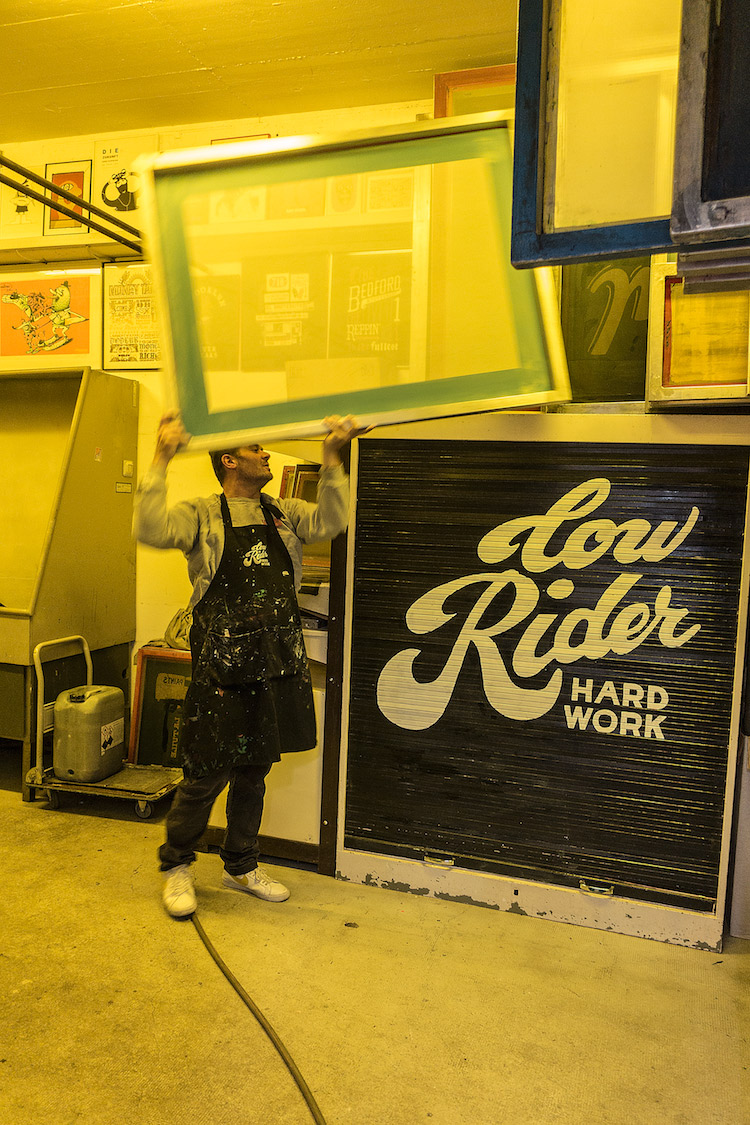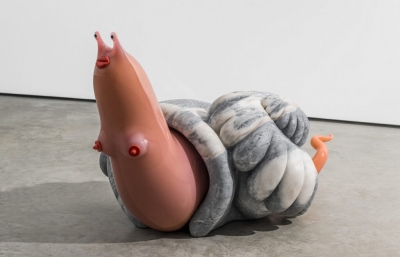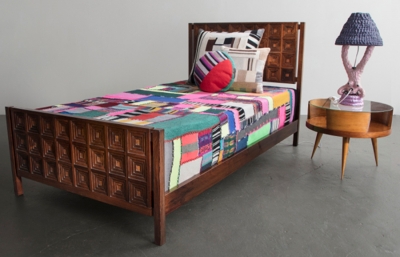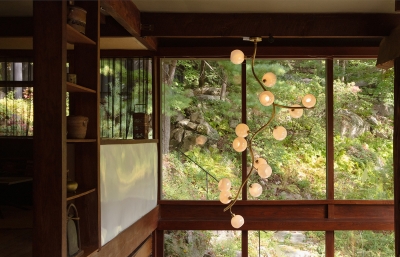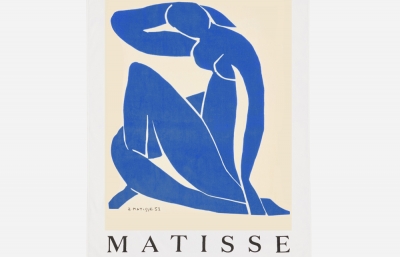Serge “Lowrider” Nideger is a beautiful anomaly. Switzerland gave him the work ethic, precision, discipline and modesty of “just doing your job.” His travel experiences and countless trips to the United States helped develop a unique visual language that is 180 degrees away from his motherland. The result? A uniquely rich career balanced between producing art prints for famed artists and galleries, and developing his own identity applied across the globe through hand-painted signs, walls, T-shirts, stickers and, of course, screen prints. We chatted from his studio in Fribourg, Switzerland on a cold January day, reminiscing about early silkscreens, starting his own business, and the Lowrider World.
Kimou “Grotesk” Meyer: Hello, Serge! How are you? Glad I can finally interview you. We met back in 2001, in Geneva, to talk about my first silkscreen. We have become very close friends since then, and you have been the only person printing my fine art. There have been so many exciting creative projects since we met!
Serge Lowrider: Hello Kimou, it's going very well. Life is beautiful.
Tell me a little bit about how you started to print and what gave you the urge to learn the craft? You also told me that, at the time, your apprenticeship included sign painting, right?
I started to collect stickers around eight or nine years old. At the same time, I discovered screen printing at a family friend’s house who was a decorator. It made me realize that there was a job where I could make a living producing what I loved and collected. I didn't need much more to realize that this was going to be my job. After this family visit, for years I kept saying that when I grew up, I’d be printing stickers! 
Stubborn as a lion, I never changed my mind. After my mandatory and painful school years, I quickly found a place to do an apprenticeship in a small company that also employed graphic designers and sign painters. It printed signs, banners and, of course, stickers; but also art editions, which I immediately liked a lot. During my apprenticeship, I loved mixing colors, Iearning that a medium too big to be printed must be done with a brush, and I quickly learned to handle the pounce wheel. It was only in my last year there that my boss bought his first cutting plotter. Unfortunately, it was the beginning of the 1990s and the computer era. I have often said to myself that I learned my trade ten years too late!
In Switzerland, the training of an apprentice takes place in a company with one day of courses per week in a professional school. I rubbed shoulders with the sign painters, book binders, and more or less, all the trades of the graphic and art production world, and after three years, got a federal diploma of capacities. There is nothing better in Switzerland to begin your professional life.
Outside of your exceptional printing and sign-painting skills, you are a great typographer, illustrator and painter. When did you realize that you had creative talent and passion for art?
I am still learning every day and I am still doing my daily exercises, so the “talent” comes from training like an athlete everyday. As far as my passion for art, it came later, when I started to travel and meet inspiring visual people. As a kid, I was drawing a lot, but all kids do it, no? When I became a teenager, I was bombing and it taught me how to manage scale, letters, size and space. So, in a way, I nourish and feed a passion that has been there since I was a little kid.
What made you realize you needed to start your own business?
After my apprenticeship, I quickly realized that I needed to create my own screen-printing shop in order to practice my craft. The beginnings were slow and it allowed me to do self-promotion material for the studio where I learned a lot about mediums. I explored a lot of different graphic and illustration styles as well. Pretty quickly, artists and galleries asked me to produce editions for them. This brought a lot of excitement and inspiration in my daily life. It pushed me to be a better craftsman and better artist on a daily basis.
You are a crazy picker. Since I’ve known you, I have seen your vintage collection growing so much. You have hundreds of vintage advertisement signs, sports memorabilia, mid-century furniture, not to mention all types of toys. What’s the importance of those objects in your work? They look to me like a giant mood board that surrounds you constantly. I see you through those objects!
Sometimes I wonder if it’s not a mental disease [laughs]. I think it’s hereditary. My mom passed it on. As a kid, I would go pick with her in flea markets, estate sales and antique stores. I started to collect by necessity to furnish my apartment and studio when I was young and broke, and then it grew into a full passion. I think I have a really good eye in scoring rare artifacts. I found a lot of inspiration in flea markets, just browsing: type on book covers, a color palette on a vinyl, or a vintage T-shirt.
I love to dig and I am patient. I can wait months to score something I want. Never eBay! I am proud to have an eBay-free collection. I guess there is also part nostalgia in this. A lot of the objects I have purchased have a production quality that’s long gone with the mass-produced, made-in-China, throwaway culture of today.
You live in the middle of hills full of cows in central Switzerland, in a village of eight houses, and your studio is in Fribourg, an historical and medieval town with a rich history. How come you know so much about streetwear, basketball, graffiti, surfing and everything that comes from the States? You literally know more about the American underground culture than most of the people I know in Brooklyn!
That’s a hard one to answer; I don’t know. I guess, since I was a teenager, I was alway hungry and interested to learn about what was going on in the States. As far as I can remember, I was always fascinated with it. I always lived in a rural area, and we only got a TV when I was 14. While all my friends wanted to play soccer, I wanted to play basketball, breakdance, do graffiti. I was the only kid around who was skating. In 1986, I asked my mom to go to NYC, and instead we went to London. She has only one memory of that trip. All I wanted was to find the kicks that Michael Jordan was wearing! You know, when you come from a small village, you can’t quickly travel and see what’s going on. That’s where this passion for America started, and it never stopped.
It's crazy to think that you are still “young” and in your prime but already have 25 years of practice and experience. You were an artisan before becoming an artist. Many artists quit their day jobs the minute they can. In your case, it feels to me that you don’t really care about what’s art or what’s commercial since your art is heavily inspired by old commercial sign painting and all your commercial jobs are inspired by your personal typeface development and illustrations. You kind of developed a perfect balanced world for yourself to evolve. It’s amazing that I can walk around your town and see so many signs and posters that you’ve done for local businesses and it’s still 100% you. Same when I see your work in a gallery or on a wall in Berlin or Miami, it just adds to the Lowrider World. Do you have a need to leave a visual and cohesive trace, or is it just a natural and subconscious approach for you?
I don’t think it’s a need. I think it’s more of an obligation for us kids of the 1980s. Growing up, we were surrounded by such a rich handmade and hand-painted graphic heritage that I feel obligated to carry it on for the future generations. I do my best to produce screen prints, walls and signs that I know can last for 100 years or more. Nowadays, nobody knows what will really happen with giclée prints, vinyl signs, and all those hard drives full of virtual art. Everything is made not to last, in a way. I pride myself (and I think it’s really a Swiss habit) to produce work that will last at least a century, rain or shine. Whether it’s a sign for a client or an art print, I want it to be something that can be passed along for generations.
There is an observational mix of nostalgia, emotions and anthropological analysis in your illustrated travel diaries. It’s sometimes a real trip, sometimes a basketball game and sometimes just improvised. Are those daily, illustrated notes a way to escape your daily routine, a way to travel mentally, or simply a personal life diary?
All of that. Some of it is based on experiences, some of it comes from my daydreaming and thoughts. At the end of the day, it’s kind of a visual diary. When I travel, the pages get filled much faster. Same for the few weeks following a trip full of great memories. I slow down when I am going through five months of straight screen-printing and local work. I also draw to trigger forgotten memories. It helps. My wife, Valérie, and I have been traveling a lot since we were young, and it’s a complete part of our lifestyle. I need to travel to be inspired. Now that our kids are almost young adults, we are looking forward to going back on the road.
You’ve achieved so much already in your professional and personal life. How do you see the next 20 years of Lowrider Studio?
I see these years more focused on traveling, sign painting and big murals. I still have a bunch of tricks of the trade to learn, and I still want to develop and push my typography. I won’t completely let go of the screen printing, as I still have a bunch of artists that I want to print, but after so many years, I am trying to think about preserving my health too. It’s a physical job, and I use pretty strong inks and solvents that I can’t avoid breathing. I want to spend more time outside, painting signs directly at the client’s location, painting huge public walls. So, basically, I want to take the studio on the road and spend less time in the shop. Since my kids are almost out, I see it coming soon. Deep inside, I have a secret dream that my kids, Ulla or Lee, will take over the business. What do you think about Lowrider and Daughter? Or Lowrider and Son? It’s sounds pretty good to me!
Serge Lowrider has collaborated with Juxtapoz in What In the World at Urban Nation Berlin and at the Juxtapoz Clubhouse in Miami. Grotesk is the designer and artist behind the Juxtapoz Newsstand and various projects with the magazine. Get in touch with Serge Lowrider at lowriderteeshirt.com.
Photography by Grotesk.

